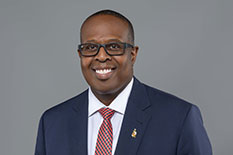News Story
Celebrating Native and Indigenous Heritage Month

History and heritage months are shared journeys. This November, Native and Indigenous Heritage Month invites us to revisit the past that has shaped us, and move us toward a better future by celebrating our backgrounds and experiences.
When aerospace engineering alumna Sheila Cummings ’97, a member of the Lumbee Cheraw Tribe, launched Cummings Aerospace in 2009, she defied historic demographic trends in the field. Today, the startup’s more than 100 employees across offices in Alabama, Florida, and Arizona provide the Air Force and Navy with engineering solutions. She attests to the importance of understanding Native and Indigenous traditions to the engineering profession. “Most Native American tribes have unique communal traditions—for instance, tribal languages and sacred tribal dance—that propagate unity, generation after generation,” she says. “This is synergistic to how we engineers work in teams to understand and solve problems.”
Growing up in Prince George’s County, electrical engineering alumnus Marcellus Proctor ’98, a member of the Piscataway Conoy Confederacy, dreamed of working for NASA. Today he serves as associate chief for the Electrical Engineering Division at Goddard, NASA’s premiere space flight complex, and chairs the Native American Employees Resource Group with an aim to increase the number of Native Americans working for NASA. His advice to the next generation of engineers? “Always be your authentic self.”
We are proud of our Native and Indigenous Terp engineers and their contributions to our school and society. But our profession has more work to do. The Society for the Advancement of Chicanos/Hispanics and Native Americans in Science (SACNAS), and national organizations such as the American Indian Science and Engineering Society (AISES), nurture academic and career success and increase a sense of belonging. Through the work of our Center for Minorities in Science and Engineering (CMSE) at Maryland, we support excllence in all students of engineering.
Campus partners are also vital to expanding the university’s commitment to success for all community members:
-
UMD’s Office of Multicultural Involvement and Community Advocacy (MICA) and its Native and Indigenous Student Involvement program support initiatives, including the Native and Indigenous Student Union and a planned Native and Indigenous graduate student association, hosts events, including How to Powwow in November, a community feed in December, and the annual UMD Powwow in Spring 2025.
-
The Division of Student Affairs leads the cultural centers project, to include the Native American and Indigenous Cultural Center.
-
The Indigenous Futures Lab serves as a hub of Indigenous research, evaluation, and relationship-building.
Journey with us during Native and Indigenous Heritage Month 2024. Celebrate, share, and learn from Native and Indigenous examples of excellence in our community and join in related campus activities.
Sincerely,
Samuel Graham, Jr. (he/him/his)
Dean and Nariman Farvardin Professor
Published November 7, 2024









